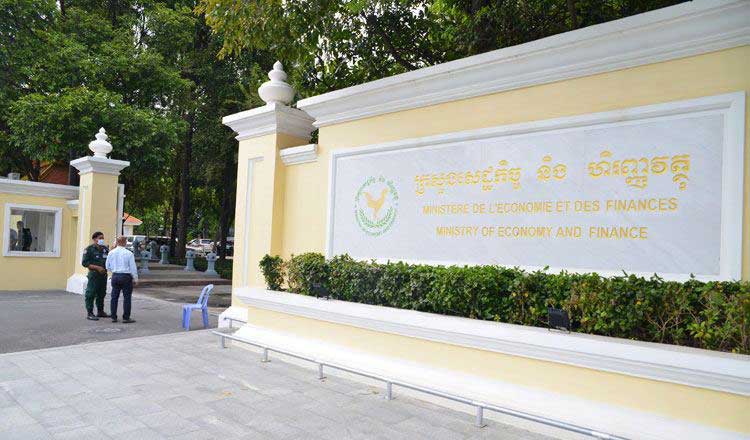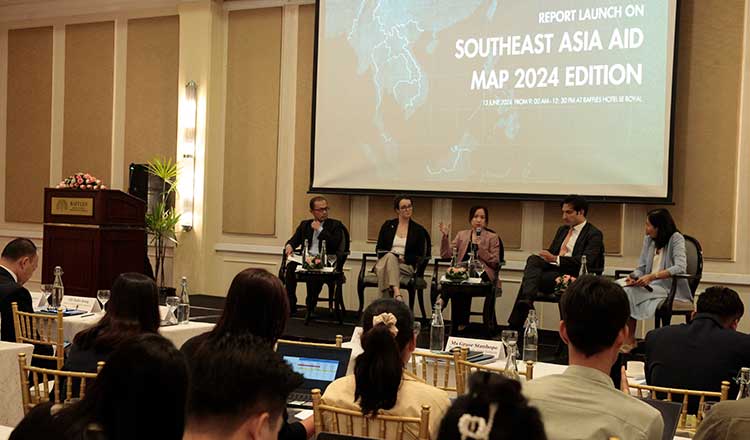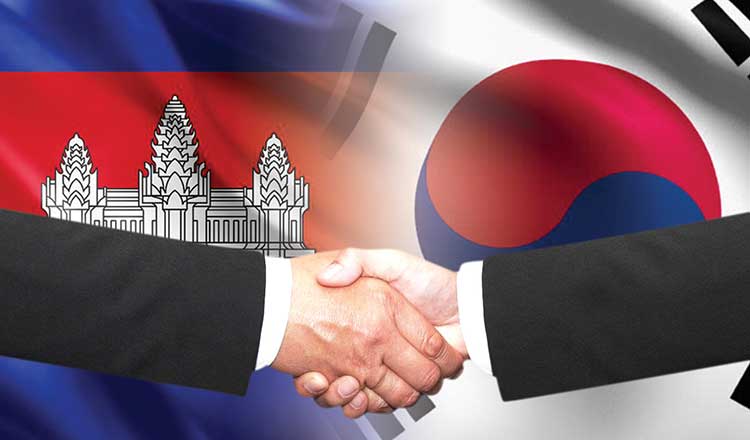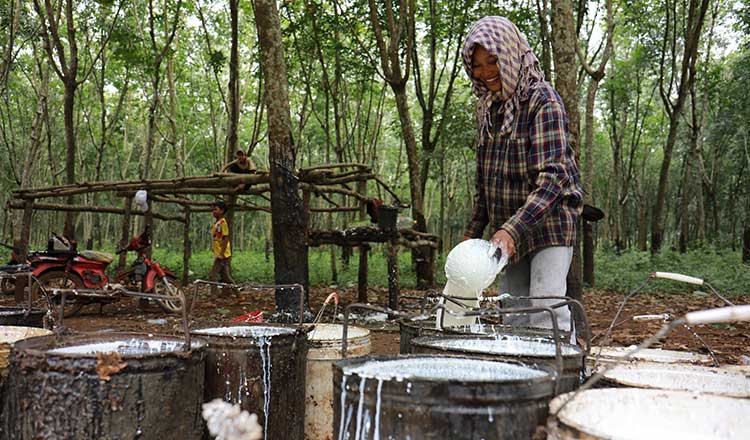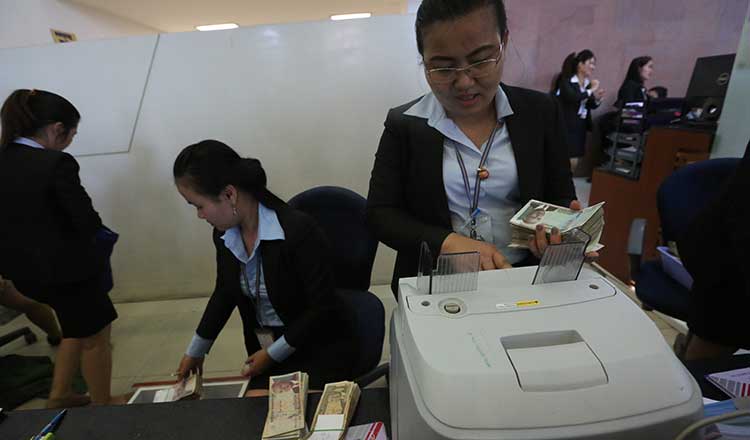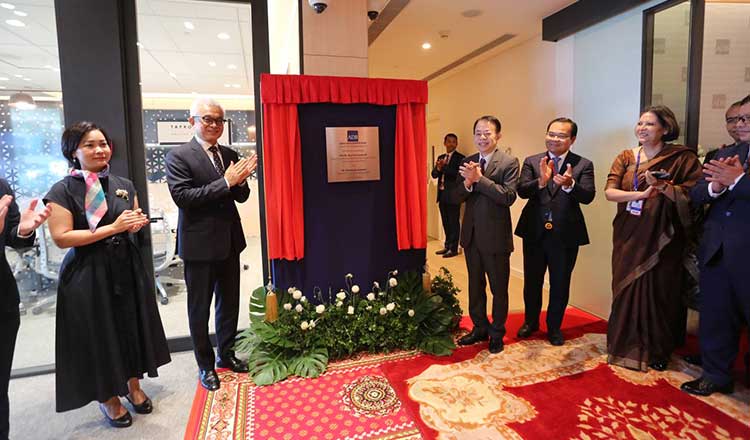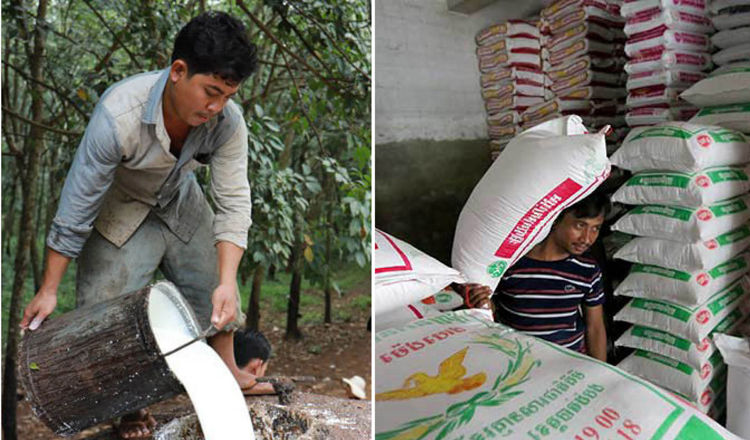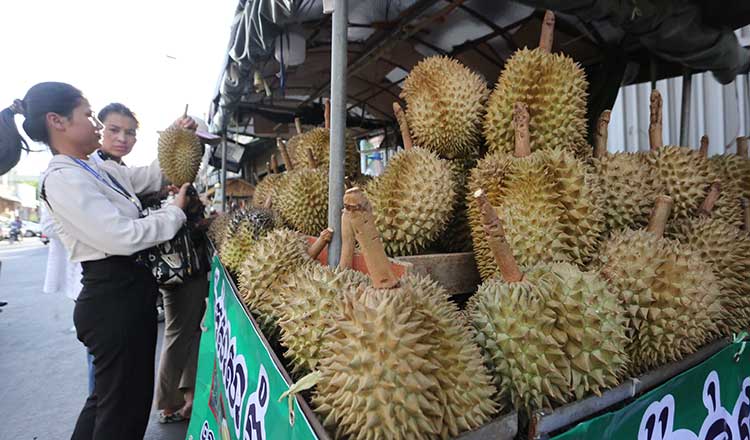Insights into Cambodia’s $36 billion facelift
Insights into Cambodia’s $36 billion facelift
In what could be the most ambitious and far-reaching approach to put the Kingdom among the comity of developing countries, the government has launched the Comprehensive Master Plan on the Cambodian Transit and Logistics System 2023-2033 to increase the ease of trade for manufacturing operations and lower the costs of trade logistics across the economy. The decade-long programme will no doubt bring a seismic shift in ordinary citizens’ lives, but it will also unleash a host of opportunities for large-scale infrastructure investors from around the world
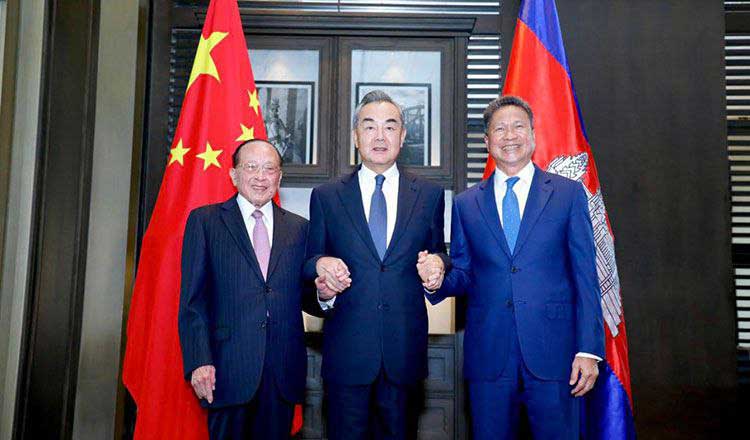
In an effort to transform Cambodia into a regional investment hub, the government has launched the Comprehensive Intermodal Transport Master Plan (CIT-MP) to modernize and upgrade infrastructure and logistics systems nationwide, presenting an important opportunity for both public and private sector investment in the nation’s burgeoning logistics industry.
The CIT-MP, otherwise known as the Comprehensive Master Plan on the Cambodian Transit and Logistics System 2023-2033, prioritizes 174 projects in the next 10-year trajectory, with an estimated total investment value of $36.68 billion, and an anticipated annual investment of $3.985 billion for the short-medium term phase from 2023 to 2027.
The comprehensive plan encompasses various sectors, including 94 road development projects, 23 river waterway projects, 20 sea transport projects, 10 air transport projects and 15 other major logistics development projects.
Highlights of the CIP-MP include three new expressways, including Phnom Penh to Kep, Phnom Penh to Stung Treng, and an expressway connecting Ratanakiri to Koh Kong.
Additionally, the plan envisions the establishment of a new railway to Vietnam from Phnom Penh through Prey Veng and Svay Rieng by 2030, with three more railways planned for 2050, connecting to Vietnam from Kampong Cham province, Kampong Cham to Laos via Kratie and Stung Treng, and a high-speed train from Kampong Cham to Thailand via Banteay Meanchey.
The $1.7 billion Funan Techo Canal (FTC) project, which will break ground for construction as soon as August 2024, is also among the 174 projects, the first project in Cambodia’s history to connect the Mekong River system and the sea.
The man-made canal will be 180 kilometres long and will connect Prek Takeo to Prek Ta Ek and Prek Ta Hing of the Bassac River System and onto Kep province. Once completed, the canal will pass through Kandal, Takeo and Kampot.
These initiatives, among over a hundred more, collectively aim to interconnect all modes of transportation and link them with regional logistics centres, according to the plan and ultimately reduce costs of logistics for traders and travellers.
Commentators from the Cambodian business sector consider the long-term benefits of the CIP-MP for both the health of the Cambodian economy and population and the unique opportunity presented for large-scale infrastructure investors from around the world.
Based on historical trends, commentators also predict the largest donors for the ambitious plan and geopolitical considerations that will likely play a part in the final formation of the CIP-MP.
Govt’s firm resolve
Sisavuthara Sim, Founder and CEO of Nexus Capital & Investment Advisory, told Khmer Times the CIP-MP confirms the government’s clear commitment to large-scale infrastructure development as its priority for the coming years.
“The main reason for prioritizing projects such as national expressways, airports, waterways and railways is to increase the ease of trade for Cambodian-based manufacturing operations, and lower the costs of trade logistics across the economy,” he explained.
Cambodia’s extensive special economic zone (SEZ) networks, while providing ease of business for manufacturers, cannot ensure efficient transportation of goods to their final destinations.
It is the reason why most of the country’s SEZs are clustered close to key trade ports and the borders of Thailand and Vietnam, noted Sisavuthara.
Cambodian manufacturers looking to export their products internationally still face higher average transportation costs than neighbouring countries, including Vietnam, noted Sisavuthara, and in the current circumstances, a significant portion of Cambodia’s traders are also reliant on transit via Vietnamese ports, adding to costs of delivery.
Sisavuthara said that the FTC is a key part of the CIP-MP for this very reason, given it aims to link Phnom Penh cargo ports to the international coast and bypass Vietnamese transit time and costs.
Importantly, it removes the economy’s reliance on foreign-owned infrastructure, he said.
The completion of the CIP-MP therefore will allow the country to become on par or more competitive to other manufacturing hubs in the region, leading to increased investment by international manufacturers, especially Chinese, said Sisavuthara.
In agreement that the primary objective of the CIP-MP is to reduce logistics costs for producers, Eren Mert, from 23Pier Co., Ltd., told Khmer Times, “In today’s economic conditions, costs generally have increased significantly.”
Logistics, one of the most important cost items, is now in search of new solutions, he said.
“A country’s economy is not just about the products it produces. Delivering these products to other countries at low costs is now an integral condition of export,” Mert explained.
The solutions within the CIP-MP will effectively reduce the transportation costs of the materials needed, he said, and delivery of products post-manufacturing.
Mert went on to add that while the CIP-MP and projects like the FTC may seem like an extreme transformation to the country’s transit system, geographical conditions are always the most important cost element in the field of logistics.
Mert noted the comparable example of the Panama Canal today.
“While traders can calculate how advantageous the distance travelled by sea is in terms of both time and nautical miles, the Panama Canal option has become both monopolized and in high demand,” he said.
For these reasons, he said, the Nicaragua Canal project was planned.
“Naturally, if this alternative project can be implemented one day, the monopolization of the Panama Canal will be prevented, more ships will be able to pass at the same time and transit costs will be further reduced,” he said.
Following the logic of the Nicaragua Canal project, initiatives such as the FTC are exciting for the economy, said Mert, as it is clear globally that countries that provide logistics advantages through innovative means will create more logistics connections and ultimately job opportunities in their regions.
Mert also noted that nationwide inclusivity in logistics access is also important to confirm the government’s commitment to all citizens, regardless of their location.
“However, it should not be forgotten that the most important issue here is integrity. Just as it is important to transport the farmer’s product from the most remote point to the most central point, it will be as important for a tourist to travel to the most important historical points in Cambodia,” he explained.
Sisavuthara said that given Cambodia’s goal is to become a worldwide hub for manufacturing, it is crucial that costs of transportation are lowered to stimulate increased foreign direct investment into the sector.
The timing of the plan is also important, given 2024’s geopolitical climate, noted Sisavuthara.
The current geopolitical circumstances in which the US and China are both vying for international trade growth will be likely to result in a dynamic shift of manufacturing from China to countries like Cambodia.
Cambodia benefits from preferential trade agreements such as the EBA for access to the European market and the GSP for access to the US market.
“This shift will play a significant role in driving the CIP-MP into reality,” suggested Sisavuthara.
In the world economy there is growing geopolitical tension between the US and China, which has led to various trade barriers between the two powers, he explained.
At the same time, European and US manufacturers are looking for options to invest in operations outside of China, he said.
Cambodia has proven it can attract at least some of these investors already, said Sisavuthara, however, given that overall costs of production are reduced, through lower transportation and electricity costs, Cambodia will expect a larger share of such incoming foreign direct investment (FDI).
The reduction of logistics costs targeted by the CIP-MP should also offer positive growth in socioeconomic development, according to commentators, including raising the economy to middle-income levels.
“More manufacturing investments equal more job creation, and a chance for a larger share of the population to gain wealth and opportunities to enter the formal economy,” said Sisavuthara.
While Cambodia is currently in a strong position when it comes to low-skill manufacturing, due to a large pool of available workforce and competitive wage costs, to raise opportunities for Cambodian workers to grow incomes, the economy must raise skill levels to support medium to high-skilled manufacturing.
Therefore, alongside infrastructure development the government is very focused on human resource and skills development in recent periods, Sisavuthara said, and this will remain the case for years to come if the country is to achieve its income status goals.
“We see trends already in this direction, such as Toyota and Ford car assembly factories as a great example. But in future, to achieve the national goals for socioeconomic development, the manufacturing sector will need to attract more highly skilled manufacturing operations, which offer high value-adding opportunities for the economy and higher salaries for workers,” Sisavuthara explained.
Generally, low-skill manufacturing offers limited value addition to raw products, and hence offers less financial benefits to both the factory and the workers.
Medium to high-skill manufacturing however comes alongside a larger value add, and more financial benefits to the factory and its workers.
Hence the economy is moving from a low-skill and low-value-adding solution to a high-skilled and high-value-adding solution.
“For this to occur, skills development must continue to be a priority,” Sisavuthara confirmed.
Mert noted that the CIP-MP will also support regional supply chain expansions into Cambodia, from countries such as Thailand and Vietnam.
Funding CIP-MP
The CIP-MP plan relies on three avenues of funding, namely the national budget, foreign financial support for public investment projects and partnerships between the state and private entities otherwise known as public-private partnerships (PPP).
Sisavuthara predicted that as the CIP-MP is to be a collective of state owned projects, the funding for the individual projects are most likely to be state-to-state investment initiatives, as opposed to attracting private investors.
Sisavuthara noted that a good example is the Phnom Penh-Sihanoukville Expressway, a government-to-government project under the Belt and Road Initiative (BRI).
Once the initial agreement was reached between state authorities, a state owned company then stepped in to finance, build and operate the expressway.
Sisavuthara offered another example, the Sihanoukville Autonomous Port. This represents Cambodian and Japanese state cooperation, with opportunities following state agreements for the Japanese private sector to invest in the project.
The new Phnom Penh Techno International Airport (TIA) is another example of a PPP in key transport infrastructures, the airport being owned by Cambodia Airport Investment Co. (CAIC), a joint venture between the Royal Government of the Kingdom of Cambodia (RGC) represented by the State Secretariat of Civil Aviation (SSCA) and the Overseas Cambodia Investment Corporation (OCIC).
Under the joint venture agreement, the Cambodian government has granted CAIC the exclusive rights to fund, construct, operate and own the new Phnom Penh International Airport.
“Privatization can offer benefits in that private companies are generally more efficient at running the final business and become specialists in their fields, compared to ongoing management by the public sector,” noted Sisavuthara.
Mert agreed that the CIP-MP may accommodate some private investments, however it will depend on the state’s budget planning.
“Of course, the state cannot direct all its investment power in this field to a single point. Naturally, the involvement of private investors in the projects will ensure that the existing state budget is used more efficiently,” he explained.
However, based on trends over the previous ten years, it is fair to expect China to be the principal supporter of the CIP-MP in terms of both funding and technical support, suggested Sisavuthara.
While some other countries have supported major infrastructure development in the past, such as Japan and South Korea, China remains the largest donor to large-scale infrastructure works by far, and this is expected to continue, he said.
Attracting state or private investments into the CIP-MP will be supported by economic incentives, commentators agreed.
Mert said in cases where it is feasible, build-operate-transfer (BOT) models are likely to be offered.
BOT is an incentive model ensuring that the company that will make the investment receives a profit share for a certain period of time following the completion of the works, he explained.
Sisavuthara noted however that while investors will gain the opportunity to break even and eventually profit from their initial investments in BOT schemes, this can take a long time to come to fruition given the large initial funding required to take on the projects.
Importantly, this type of structure means that once original costs are reclaimed, the project can be returned to the Cambodian state’s control, Sisavuthara added. “This allows an opportunity to local communities where infrastructure is developed to gain benefits from the completion of the project, whether it be employment, use or other investment mechanisms.”
Furthermore, supporting infrastructure developers might gain a foothold in the region by successfully contributing to the CIP-MP, suggested Mert.
“The work you do in such a rapidly developing country will be your reference. It is difficult to obtain references, especially regarding infrastructure. When you fulfill a competition you won after major tenders by showing your quality and service diversity, you will have an important place in the sector and become a sought-after company,” he said.
Challenges ahead
Given that Chinese investment for the CIT-MP is expected to be dominant though, Cambodia will rely on this support to meet the goals and time frames of the plan, explained Sisavuthara.
This may pose challenges, he suggested. “We can see the Chinese economy has somewhat retracted in recent periods, and growth has slowed. The plan therefore could be at risk of Chinese capital flows into overseas infrastructure development slowing down.”
Alongside that, global issues are making the economy more volatile, and making central banks more tense.
If interest rates grow too much, the plan may also face delays, Sisavuthara said.
Another potential challenge may exist if other major trading partners see the CIP-MP and projects within it as more beneficial to China than Cambodia, explained Sisavuthara.
For example, the mixed reactions from countries including the US regarding the government’s plans to begin the FTC.
While Cambodia views China as a crucial partner for development, over reliance might lead to a distancing of traditional trade partnerships, especially with the US and EU. Diversifying trade and investment partnerships benefits Cambodia by reducing their dependence on any single country.
Sisavuthara noted that when trading with ASEAN partners and China, Cambodia has a trade deficit, while in exchanges with Western markets, such as the US and EU, Cambodia has a trade surplus.
“This trade surplus is of significant benefits to the economy, and from a trade perspective Cambodia needs to balance China and the US, to ensure that the country is not isolated from their lucrative markets for exports,” he said.
On a positive note, Sisavuthara mentioned that Prime Minister Hun Manet recently announced that the FTC project, previously entirely foreign-funded, will now be a joint venture.
The project will involve the Sihanoukville and Phnom Penh Autonomous Ports, a private company holding a 51 percent stake, and foreign investors under a Build-Operate-Transfer (BOT) contract.
This new structure should address concerns raised by some countries regarding foreign dominance in the FTC project, Sisavuthara said.






